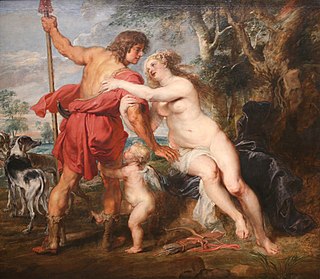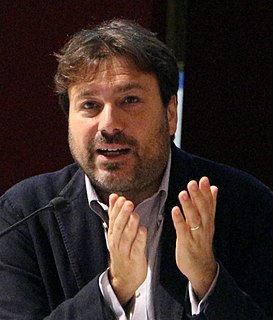 W
WThe Baroque is a style of architecture, music, dance, painting, sculpture, and other arts that flourished in Europe from the early 17th century until the 1740s. In the territories of the Spanish and Portuguese empires including the Iberian Peninsula it continued, together with new styles, until the first decade of the 19th century. It followed Renaissance art and Mannerism and preceded the Rococo and Neoclassical styles. It was encouraged by the Catholic Church as a means to counter the simplicity and austerity of Protestant architecture, art, and music, though Lutheran Baroque art developed in parts of Europe as well.
 W
WRocaille was a French style of exuberant decoration, with an abundance of curves, counter-curves, undulations and elements modeled on nature, that appeared in furniture and interior decoration during the early reign of Louis XV of France. It was a reaction against the heaviness and formality of the Style Louis XIV. It began in about 1710, reached its peak in the 1730s, and came to an end in the late 1750s, replaced by Neoclassicism. It was the beginning of the French Baroque movement in furniture and design, and also marked the beginning of the Rococo movement, which spread to Italy, Bavaria and Austria by the mid-18th century.
 W
WRococo, less commonly Roccoco or Late Baroque, is an exceptionally ornamental and theatrical style of architecture, art and decoration which combines asymmetry, scrolling curves, gilding, white and pastel colors, sculpted molding, and trompe-l'œil frescoes to create surprise and the illusion of motion and drama. It is often described as the final expression of the Baroque movement.
 W
WThe Church of St. Stephen Harding in Apátistvánfalva or Apátistvánfalvian Church is a Baroque Roman Catholic Church in the village of Apátistvánfalva (Števanovci), Hungary. It is near the Hungarian-Slovenian border, in the Vendvidék region. Its patron saint Stephen Harding was an English saint and the founder of the Cistercian Order.
 W
WThe art of the Low Countries consists of painting, sculpture, architecture, printmaking, pottery and other forms of visual art produced in the Low Countries, and since the 19th century in Belgium in the southern Netherlands and the Netherlands in the north.
 W
WThe auricular style or lobate style is a style of ornamental decoration, mainly found in Northern Europe in the first half of the 17th century, bridging Northern Mannerism and the Baroque. The style was especially important and effective in silversmithing, but was also used in minor architectural ornamentation such as door and window reveals, picture frames, and a wide variety of the decorative arts. It uses softly flowing abstract shapes in relief, sometimes asymmetrical, whose resemblance to the side view of the human ear gives it its name, or at least its "undulating, slithery and boneless forms occasionally carry a suggestion of the inside of an ear or a conch shell". It is often associated with stylized marine animal forms, or ambiguous masks and shapes that might be such, which seem to emerge from the rippling, fluid background, as if the silver remained in its molten state.
 W
WCartilage Baroque, or Bruskbarokk and similar terms, denotes a stylistic period centering around the middle of the 17th century in Northern Europe, particularly in Scandinavia and Germany. Primarily a style of ornament, it is known as Bruskbarokk in Norwegian, Bruskbarok in Danish and Knorpelbarock in German, and style cartilage may be encountered in French, often referring to work in Alsace. However, the various terms can be applied to a bewildering range of styles of Northern Mannerist and Baroque ornament. In English these terms are mainly found in translated texts from European languages.
 W
WTomaso Montanari is an Italian art historian, academic and essayist.
 W
WThe Seicento is Italian history and culture during the 17th century. The Seicento saw the end of the Renaissance movement in Italy and the beginning of the Counter-Reformation and the Baroque era. The word seicento means "six hundred" and is short for milleseicento, 1600.
 W
WSine Cerere et Baccho friget Venus, Latin for Without Ceres and Bacchus, Venus freezes, or Sine Cerere et Libero friget Venus, is a quotation from the Roman comedian Terence that became a proverb in the Early Modern period. Its simplest level of meaning is that love needs food and wine to thrive. It was sometimes shown in art, especially in the period 1550–1630, in Northern Mannerism in Prague and the Low Countries, as well as by Rubens.
 W
WSpanish Baroque painting refers to the style of painting which developed in Spain throughout the 17th century and the first half of the 18th century. The style appeared in early 17th century paintings, and arose in response to Mannerist distortions and idealisation of beauty in excess, appearing in early 17th century paintings. Its main objective was, above all, to allow the viewer to easily understand the scenes depicted in the works through the use of realism, while also meeting the Catholic Church's demands for 'decorum' during the Counter-Reformation.
 W
WThe Spanish Golden Age is a period of flourishing in arts and literature in Spain, coinciding with the political rise of the Spanish Empire under the Catholic Monarchs of Spain and the Spanish Habsburgs. The greatest patron of Spanish art and culture during this period was King Philip II (1556–1598), whose royal palace, El Escorial, invited the attention of some of Europe's greatest architects and painters such as El Greco, who infused Spanish art with foreign styles and helped create a uniquely Spanish style of painting.
 W
WA statue of Queen Anne is installed in the forecourt outside the west front of St Paul's Cathedral, in London, United Kingdom. It became a Grade II listed building in 1972.
 W
WJacob Carl Stauder was a Swiss-German painter in the Baroque style.
 W
WVenetian painting was a major force in Italian Renaissance painting and beyond. Beginning with the work of Giovanni Bellini and his brother Gentile Bellini and their workshops, the major artists of the Venetian school included Giorgione, Titian, Tintoretto (1518–1594), Paolo Veronese (1528–1588) and Jacopo Bassano (1510–1592) and his sons. Considered to give primacy of colour over line, the tradition of the Venetian school contrasted with the Mannerism prevalent in the rest of Italy. The Venetian style exerted great influence upon the subsequent development of Western painting.